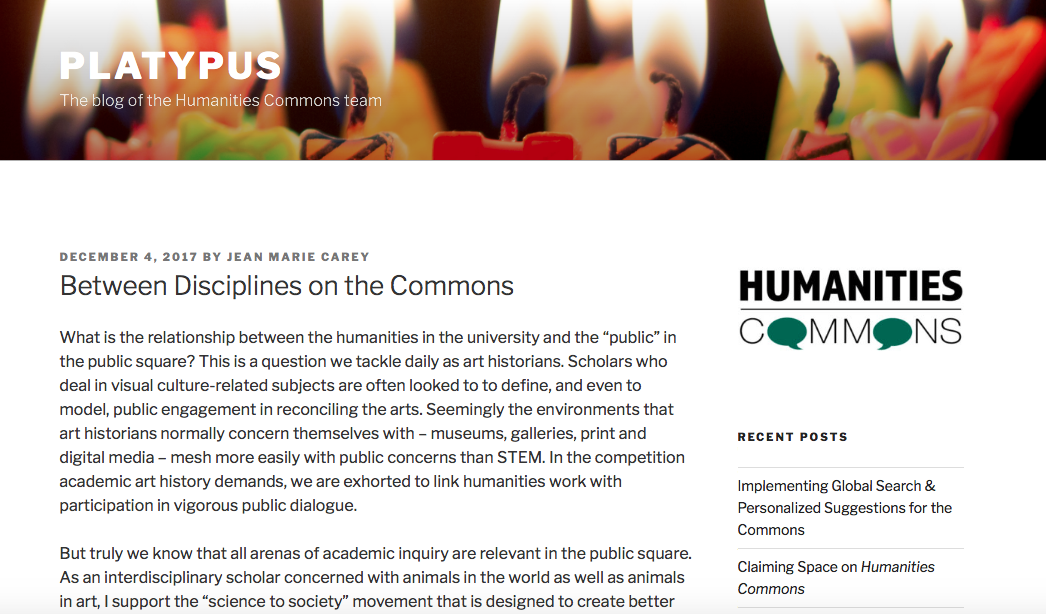
I was pleased to be asked to write a commemorative post for the Humanities Commons Platypus blog in honour of HC’s first anniversary. You can read the full text here or after the jump.
Between Disciplines on the Commons
What is the relationship between the humanities in the university and the “public” in the public square? This is a question we tackle daily as art historians. Scholars who deal in visual culture-related subjects are often looked to to define, and even to model, public engagement in reconciling the arts. Seemingly the environments that art historians normally concern themselves with – museums, galleries, print and digital media – mesh more easily with public concerns than STEM. In the competition academic art history demands, we are exhorted to link humanities work with participation in vigorous public dialogue.
But truly we know that all arenas of academic inquiry are relevant in the public square. As an interdisciplinary scholar concerned with animals in the world as well as animals in art, I support the “science to society” movement that is designed to create better portals for communicating knowledge to a broad public and to engage everyday people in discussions about the societal impact and meaning of contemporary science-related issues such as the concept of the Anthropocene and its relationship to climate change and mass extinction. Art historians already have an expertise that is not always able to readily translate beyond the journal article or the seminar setting. Thus we are tasked to think more purposefully about how to make all this information accessible to a range of public audiences, and to one another.
The stakes of this kind of engagement have never been higher. As both a concept and a real sphere of life, “the public” is under significant pressure at this historical moment. The breakdown of a consensus about civitas has reshaped our understanding of what public discourse can and should be. The time for taking up space in the public square to both rescue and revitalize it is now.
In that spirit, I use Humanities Commons to communicate with a mix of people dedicated to a combination of inquiry and action when it comes to the challenges we face in interdisciplinary collaboration. HC’s CORE Repository springs from the open-access “archival impulse,” but because it offers the possibility to house works-in-progress and experimental formats, it has more of a roll-up-your sleeves feel to it. Humanities Commons challenges a one-directional model of “public humanities” by fostering opportunities for cross-pollination, generative activism, and the simple joy of sharing the subjects we love and to which we are devoted. I hope to see more of those connections being sustained into the second year of Humanities Commons and beyond.
 RSS - Posts
RSS - Posts